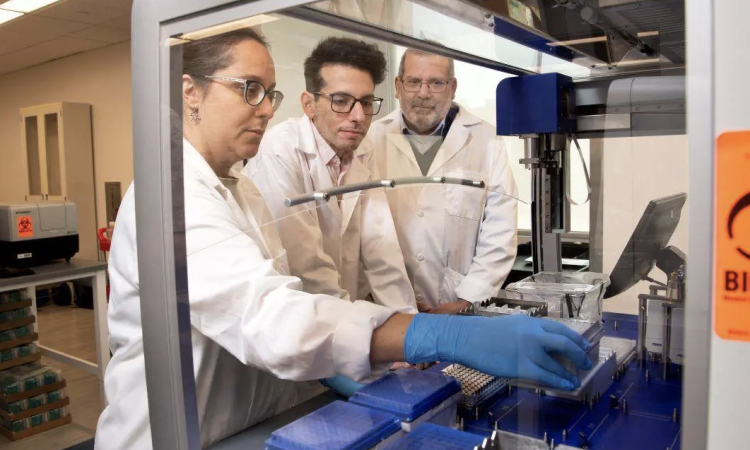ChBE’s Ravi Kane leads a $4M grant to develop an influenza vaccine that provides long-lived protection against a broad range of viral strains.

There are around a billion cases of seasonal influenza worldwide every year, according to the World Health Organization. As many as 5 million cases are severe, causing up to 650,000 deaths.
Pandemics caused by novel influenza viruses — like the 1918 flu pandemic that killed more than 50 million people — represent an even more serious threat.
School of Chemical and Biomolecular Engineering Professor Ravi Kane is leading a multi-university team that has received a five-year, $4 million grant from the National Institutes of Health to change that and develop a more resilient flu vaccine — one that provides lasting protection from season to season.
The goal is to design a vaccine that provides broad protection against group 1 influenza A viruses — a group that includes the 1918, 1957-1958, and 2009 pandemic viruses —as well as some as some bird flu viruses that can cause disease in humans.
Kane has pioneered approaches for refocusing the immune response to protein antigens and controlling antigen orientation. His ChBE research group designs nanoscale scaffolds for antigen presentation as part of novel strategies for designing vaccines, including flu vaccines.
He explains why flu vaccines vary every year and how he’s working to create a universal influenza vaccine.

Kane
Why are people currently encouraged to get the flu vaccine every year?
Vaccines are only good for this year because next season’s circulating viruses will be different.
Current seasonal vaccines induce an immune response that primarily targets the head of hemagglutinin (HA), a flu protein responsible for helping the virus attach to and infect human cells. The head of the flu protein, however, easily mutates. Essentially, it can change its appearance every year, which means that the immune system won’t recognize the virus when it reappears next season.
At the same time, mismatches between vaccine strains and viruses circulating in a given flu season can occur, resulting in a decrease in vaccine efficacy. Currently available vaccines would also provide little protection against potential pandemic influenza viruses because their sequences for such a virus would be even more different than the small mutations that arise from season to season
Thus, a vaccine that provides long-lived protection against a broad range of viral strains, as well as against viruses with pandemic potential, is sorely needed.
How will you try to achieve this goal with the new NIH grant?
Our team, which includes Albert Moreno at Emory University and Gabriele Neumann and Yoshihiro Kawaoka at the University of Wisconsin-Madison, plans to create a robust and durable immune response that targets the highly conserved stalk of the hemagglutinin flu protein, instead of the head.
This stalk plays a critical role in viral entry into our cells during infection and has a lower tolerance for mutations than the head.
Our lab recently showed that tuning the orientation of the protein to increase the accessibility of the stalk results in an enhanced protective immune response. We also can display multiple hemagglutinin proteins on a nanoparticle, which can elicit a stronger immune response than if a nanoparticle housed just a single hemagglutinin protein. We will work on applying this expertise to elicit a strong and durable response targeting the stalk area of the protein.
At the same time, we will test new approaches to suppress the immune response against the head. We also are using a combination of computational and experimental methods to generate better hemagglutinin antigens that are more stable and elicit a broader protective response.
(text and background only visible when logged in)
Related Content

Three Tech Projects Tackle Cancer With ARPA-H Support
The initiatives, which have collectively received $119 million from ARPA-H, aim to cut the cancer death rate by half in 25 years.

A Simpler Approach to Prevent Cervical Cancer Wins Collegiate Inventors Competition
A team of students, who created a simple menstrual pad add-on to collect blood for lab screening, has earned them the top prize among undergraduates in the 2023 Collegiate Inventors Competition at the National Inventors Hall of Fame.